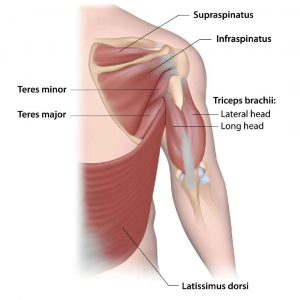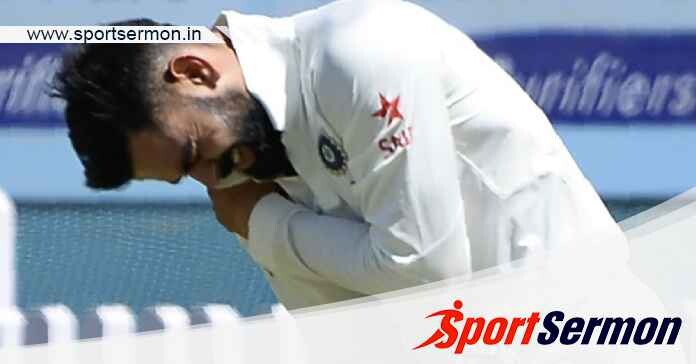With the cricket season well and truly underway, it’s critical to understand the most common cricket injuries and how to manage and reduce your risk of each injury. Cricket is one of the most widely played sports in India. Although cricket is not a contact sport, injuries do occur, often as a result of overuse. Because cricket is frequently played in hot weather, players and spectators must be protected from dehydration, heat stress, and sun damage.
Common Cricket injuries:

1. Rotator cuff injuries:
All aspects of cricket, including bowling, batting, and fielding, strain your shoulders.
The rotator cuff is made up of four muscles that help to stabilize the shoulder joint (supraspinatus, infraspinatus, subscapularis, and teres minor). Rotator cuff injuries occur when any of the four muscles is strained or torn. This can cause symptoms like pain, swelling, and limited range of motion. The severity of rotator cuff injuries varies, but it is recommended that you seek professional help from a physiotherapist.
2. Hamstring strains:
Hamstring strains are common in cricket during sudden sprints, such as when fielding or taking a single run. These Hamstring strains range in severity from minor to severe, with minor strains feeling like an ache in your hamstring and major strains being extremely painful and making it difficult to walk or stand at all. The POLICE principle should be used for initial treatment, and following up with a physiotherapist is highly recommended. Making sure you warm up properly before going out on the field can help you avoid hamstring strains.
3. Ankle sprains:
Ankle sprains are common in most sports, including cricket. Running at high speeds, as well as changes in momentum and abrupt stops, can all result in ankle sprains. To ensure optimum recovery, initial treatment should include the POLICE principle and follow-up with a physiotherapist, as well as a discussion of prevention measures. If you are prone to ankle sprains, we recommend seeing a physiotherapist, as a tailored program can help increase your ankle mobility and prevent sprains.
4. Abdominal side strain:
A side strain is most common in bowlers and occurs when the obliques (the side of your abdomen) are strained or torn. This happens on the opposite side of the bowling arm and can be mild to severe. Treatment necessitates both adequate rest from bowling and professional care.
5. Contusions:
Contusions are caused by a direct impact on the muscle, most commonly by the ball in cricket. This causes swelling and bruising in the area and varies in severity (generally, the contusion is more severe if the ball hits you at a faster speed).
The POLICE principle is recommended for treatment, and medical assistance may be required for more severe contusions.
6. Thrower elbow (Medical epicondylitis):
Thrower elbow is a common overuse injury in bowlers caused by the repetitive strain of throwing a cricket ball. Symptoms often appear gradually and include pain on the inside of the elbow and wrist weakness. To begin, the POLICE principle, as well as rest, can be used to alleviate the symptoms of thrower elbow. Following this, it is advisable to seek professional advice for further treatment and prevention.
7. Low back pain:
In cricket, the lower (lumbar) region of the back is used for everything from batting to diving for the ball. Lower back pain can be caused by both direct trauma and overuse or fatigue. Low back pain is common in fast bowlers, and lumbar stress fractures can develop as a result of long periods of repetitive actions while bowling.
POLICE Principle remedy:

Following a musculoskeletal injury, the POLICE principle can be applied.
Protection: entails resting the injured area at first and then beginning gentle motion after a few days.
Optimal Loading: Although the injured area should be rested, some movement should still be maintained. Begin with a passive range of motion and work your way up to an active range of motion. Your physiotherapist can recommend the best exercises for your rehabilitation.
Ice: can help with swelling and pain management. As a general rule, try 10 minutes every hour. Remember that ice should not be burned.
Compression: bandages may aid in your rehabilitation. Consult your physiotherapist to determine the best method for you.
Elevation: While lying or sitting, try to elevate the injured area to increase blood flow to the area.
Prevention Methods:

Although many injuries are unavoidable, there are some things you can do to reduce your chances of getting hurt.
1. Warm up and cool down:
It is critical to warm up and cool down properly. Make sure you have a well-planned warm-up and cool-down routine, and that you always make time for it. Warm-up exercises should be more dynamic, while cool-down stretches should be static.
2. Have a screening with a physiotherapist:
Physiotherapists can help you reduce your risk of injury by identifying weak spots in your body through a musculoskeletal screening and then helping you improve on those areas.
3. Core stability training:
Core stability training is important for bowlers in particular because it can help reduce the risk of low back pain and side strains. A physiotherapist can assist you in developing a core stability program.
4. Targeted strength training:
Strength training can lower your risk of injury. A physiotherapist can assist you with a customized strength program.
5. Healthy diet:
Even though it won’t directly prevent an injury, indirectly it has a huge impact on your game. A healthy and fit body and mind keep you safe and focused on your game. This leads to avoiding unnecessary injuries and mishaps.
So, this was all about the cricket injuries and its prevention methods. Also read, Cricketer Hafeez spills beans on Mohammad Amir’s comeback.

